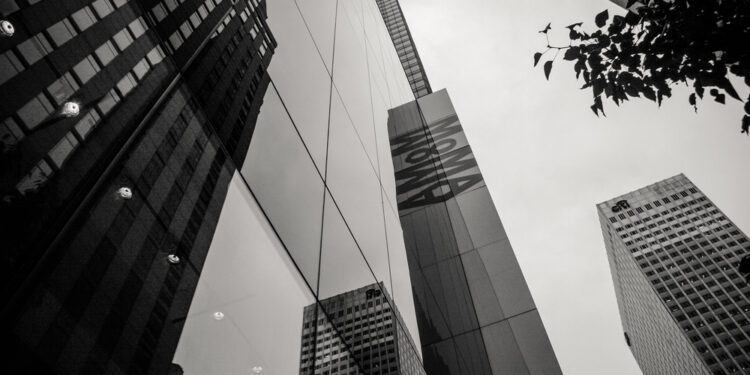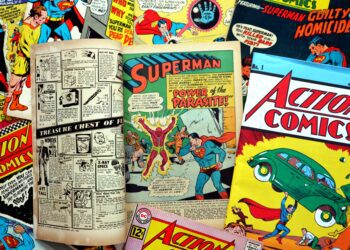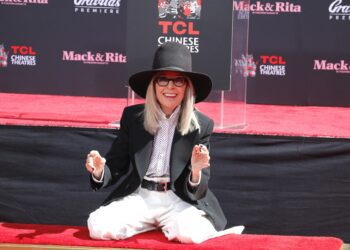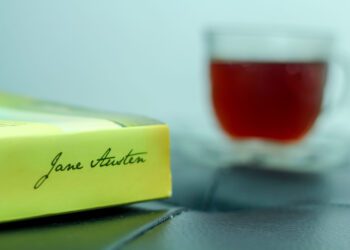In this excerpt from the Life Dances On exhibition catalogue, the collage 10th Street Painters embodies the network of artists in Frank’s orbit.
For 10th Street Painters Robert Frank drew from two decades’ worth of portraits and snapshots, many of which he had previously printed at larger sizes for use in different contexts—working, as he frequently did, across commercial and creative fields. In his photographs of his artist friends, he moved between another set of roles, as both participant and chronicler. Nearly all the painters who appear in 10th Street Painters (Gandy Brodie, John Grillo, Lester Johnson, Bob Thompson) studied with Hans Hofmann at some point; they were active in the era’s debates about abstraction versus figuration and worked in both. Ponce Israel, who was married to the future Harper’s Bazaar art director Marvin Israel, is shown surrounded by her ceramic works—both large and small, abstract and figurative. When 10th Street Painters was made, some of the artists in the photographs had passed away or receded from public view, such as Jan Müller, who died in 1958 at the age of 35. His portrait at the center of the collage shows him at an opening at Hansa Gallery, standing in front of his 1956 painting Walpurgisnacht—Faust II, engaged in conversation with guests. The figures in the painting form another crowd of sorts around the artist’s head, perhaps Frank’s way of restoring his friend to the prominence he had enjoyed at the height of his career.
Frank also photographed friends who were geographically and stylistically distant from the East Village scene, although they are not included in 10th Street Painters. One was the sculptor Raoul Hague, who had moved from New York City to Woodstock, New York, in 1943. Hague had been involved in several important group exhibitions in New York during the 1950s (including Twelve Americans at The Museum of Modern Art in 1956), but he deliberately distanced himself from the art market and subsisted instead on occasional grants.1 As Frank would later do with his move to Nova Scotia, Hague had also chosen to live away from New York.2 A 1955 photograph (right) shows him outdoors with a sculpture, seemingly lost in thought. Hague, who was reticent about crediting the tastes of others, later acknowledged that Frank “had a good eye, even for painting and sculpture.”3
Despite his aversion to commercial photography, Frank still needed to support his family. As he later recounted in the documentary Don’t Blink—Robert Frank (2015), “I got married very quick. Had children. The best time for my photography was also the hardest to support my family. You had a low living standard, but you believed in what you were doing. Then I got a job for the New York Times. [Louis] Silverstein, he really kept me alive.” Frank was openly skeptical of institutions such as the Times, but he seemed to find freedom and satisfaction, in addition to income, in an ongoing job for the art director Louis Silverstein. Together, they worked on numerous advertising campaigns that ran in trade publications such as Advertising Age and which, even though they were clearly commercial, gave Frank an experimental ground for his own work.4 By 1961 Silverstein and Frank were creating ads that paired identical images on a single page so that they resembled filmstrips; the curator Philip Brookman has described these as “moments or flashes of light [that] created a sense of literal motion in the advertisements.”5 For Silverstein, Frank’s hundreds of photoshoots for the campaign resembled small film productions and were a precursor for Frank’s first films.
The Beat poets were key interlocutors in these early works.6 Frank’s entrée into the Beat community was through Jack Kerouac, whom he met in 1957 and who wrote the introduction to The Americans. Kerouac is not pictured in 10th Street Painters but is mentioned with Allen Ginsberg in the work’s inscription. Frank said in Don’t Blink that the Beats had been “very important in my development as an artist” because they had “a kind of desire to express something new, to move in a different direction, believing that you could find your own way and create your own rules.”
For Pull My Daisy, his first finished film, Frank drew upon the group’s improvisational sensibility. The film, directed by Frank and Leslie, was filmed in Leslie’s loft on Fourth Avenue in the East Village, with a cast made up of the poets Ginsberg, Peter Orlovsky, and Gregory Corso; the artists Larry Rivers and Alice Neel; the actress Delphine Seyrig; and Richard Bellamy. In a loose narrative adapted from the third act of Kerouac’s then unpublished play The Beat Generation (1957), a bishop (Bellamy) visits the apartment of a married couple (Rivers and Seyrig), where their lunch is invaded by their bohemian friends (Corso, Ginsberg, and Orlovsky). Although Frank described the film as “an exercise in spontaneity, a documentary of a group of people, held together by a consistent attitude,” and critics similarly played up the film’s supposed extemporization, Pull My Daisy was planned and shot over several takes.7 Kerouac’s detailed voiceover, which seems entirely improvised, was also done over multiple takes, as Kerouac watched the edited film and Frank recorded him. Artistic collaborations were not always easy for Frank; following the release of Pull My Daisy, he and Leslie disagreed so vigorously about their respective contributions that their film partnership and friendship came to an end.8 Nonetheless, 20 years later Frank included an image of Leslie in his studio in 10th Street Painters.
By Kaitlin Booher/Courtesy MOMA












